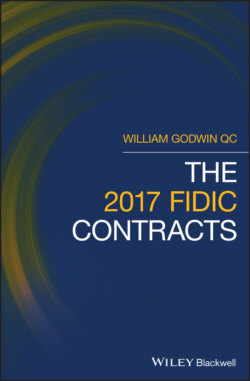Читать книгу The 2017 FIDIC Contracts - William Godwin - Страница 34
2.4 Priority of Documents
ОглавлениеIn both editions of all three forms clause 1.5 deals with the priority of documents. A FIDIC contract will consist of a whole range of documents and so there is a risk of conflicts, ambiguities or discrepancies between them. Clause 1.5 begins by stating the general principle that the documents forming the Contract are to be taken as mutually explanatory of one another. Categories of document are then set out and given a priority, so that any conflict, ambiguity or discrepancy between them can be resolved by assigning the relevant document the appropriate place in the hierarchy. In the Yellow Book in both editions, for example, the Contract Agreement has first place in the hierarchy, followed by the Letter of Acceptance and the Letter of Tender.2In the 2017 editions a party detecting an ambiguity or discrepancy must give notice to the Engineer (or in the Silver Book, the other party) and appropriate clarifications or instructions are to be given.
An important practical point about clause 1.5 is that, at the lowest end of the hierarchy, there is a space for ‘any other documents’ forming part of the Contract. This is a potential trap, because there may well be Contract documents which do not fall into any of the categories identified elsewhere in the hierarchy but which have great importance and require a higher position than perhaps some documents which are listed; there may, for example, be highly important technical requirements contained in Contract documents which ought not to have the lowest priority. Care should be taken, therefore, in ensuring that an appropriate position in the hierarchy is accorded to documents which may not fall into the pre‐existing categories, otherwise by default they will be given the lowest ranking.
It is not unusual in many projects for pre‐contractual documents to be appended to the Contract with a priority clause intended to protect against the risk of inconsistencies with, for example, bespoke amendments to Contract conditions. However, as a recent English High Court decision on a domestic sub‐contract form highlights, careful attention has to be paid to all the technical and commercial documents making up the Contract if unintended consequences are to be avoided. In Clancy Dowcra Ltd v E.ON Energy Solutions Ltd [2018] EWHC 3124 (TCC) it was held that, despite a clause giving priority to amendments placing the risk of ground conditions on the sub‐contractor it was able to rely on exclusions contained in tender documentation appended to the sub‐contract to avoid liability when adverse ground conditions were encountered, since they were taken to have defined the scope of the sub‐contract works. Whatever priority is assigned, therefore, appending documents to the Contract may give rise to unintended consequences if insufficient attention is paid to their effect or scope.
